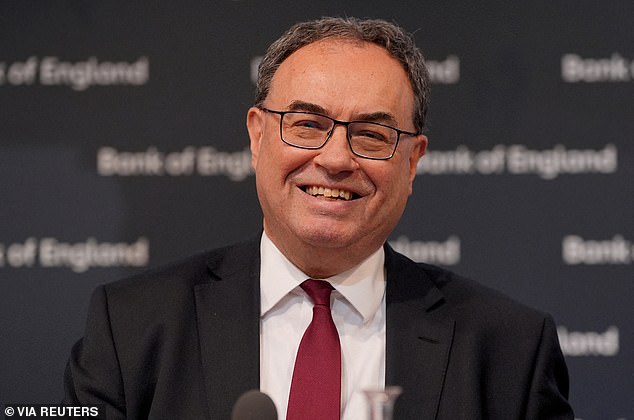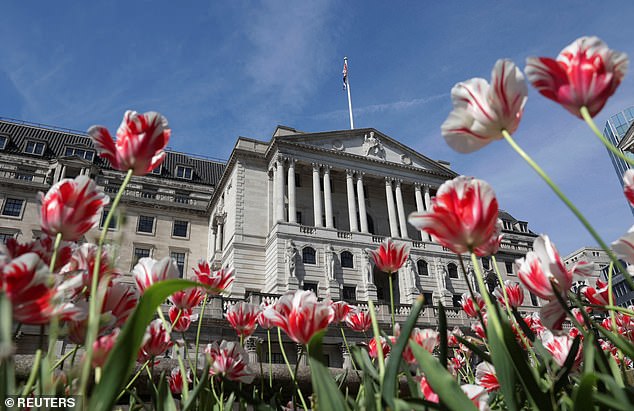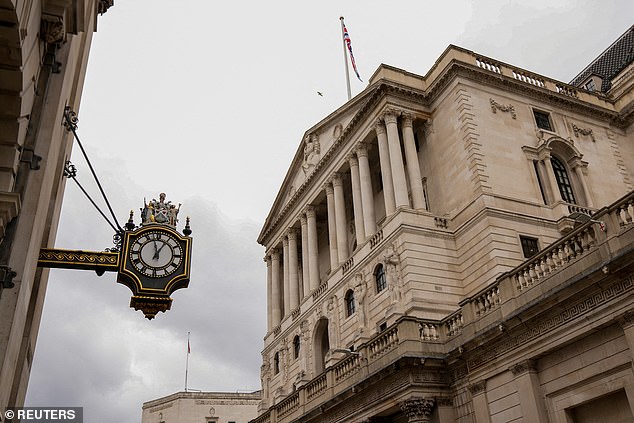- The Bank of England decided to keep interest rates at 5.25% in June to curb inflation
A third of a million homeowners have been pushed into poverty by rising interest rates, according to a new study.
The Institute for Fiscal Studies (IFS) has said the number is likely to have risen by 320,000 between December 2021 (when the Bank of England began raising rates) and December 2023.
The average mortgage rate was around 2.3 per cent in 2022, translating into interest payments of £240 a month for a household, according to an IFS report.
But a tenth of households faced a mortgage interest rate of at least 4.7 per cent, equivalent to £490 a month.
The research group warned that this could have pushed more adults into financial difficulties.
This figure exceeds the 230,000 people projected by applying a single average interest rate.
Up to 320,000 people may have been pushed into poverty by rates in the period between December 2021, when the Bank of England (pictured) raised rates, and December 2023.

Bank Governor Andrew Bailey said in June that policymakers “need to be confident that inflation will remain low” when deciding to keep the level at 5.25 percent.
The rise in poverty comes because borrowers who remortgaged in 2022 were more likely to fall behind on payments than those with mortgages who had not remortgaged, the IFS said.
Sam Ray-Chaudhuri, a research economist at the IFS and one of the authors of the report, said: “Rising mortgage rates have played and are likely to continue to play a significant role in the living standards of many households. But, perhaps surprisingly, they are not adequately measured in official income data.”
He added: “At a time when rates of food deprivation and insecurity have increased substantially, poverty statistics that obscure the true scale of these increases risk causing policymakers to overlook what is really happening to poverty.”
Peter Matejic, JRF’s chief analyst, said: “This report raises many questions about whether social security is adequate to meet the challenges facing struggling households.”
But millions of borrowers will be hoping the Bank of England will cut interest rates when policymakers meet next Thursday.
Bank interest rates have been at 5.25 percent since last August, their highest level in 16 years.
The Bank was one of the first central banks to start raising borrowing costs after the pandemic and is expected to begin easing this policy.

The Bank of England kept interest rates on hold at 5.25 percent, which could pave the way for a cut in August.
But separate data from the Bank’s latest Financial Stability Report last month warned that four million mortgage borrowers still face sharp increases in payments over the next few years.
Homeowners nearing the end of their fixed-rate contracts are on track to see their monthly payments rise by a typical £180 (or 28 per cent, equivalent to more than £2,000 a year) by the end of 2026.
For about 400,000 people, a “very large” increase of 50 percent or more is expected, the report said.
The figures illustrate that while rate cuts are expected to provide relief to many in the coming months, a large number of borrowers are still facing painful blows to their finances.

